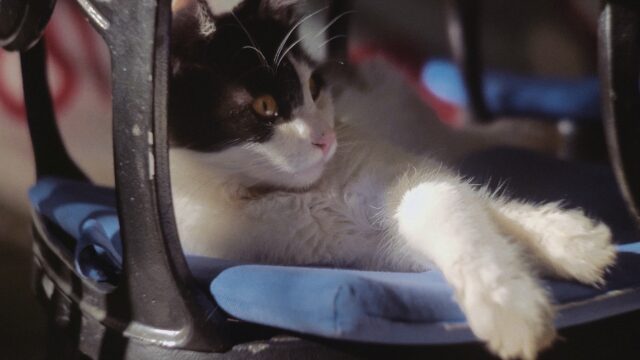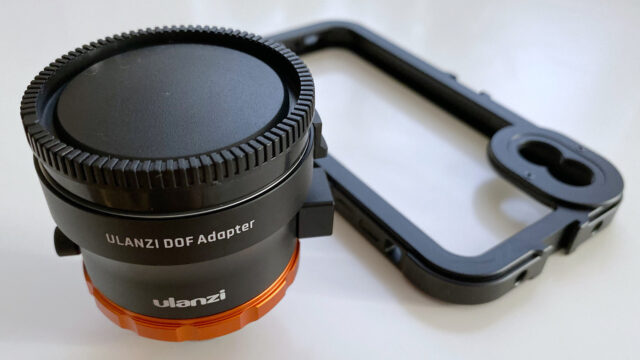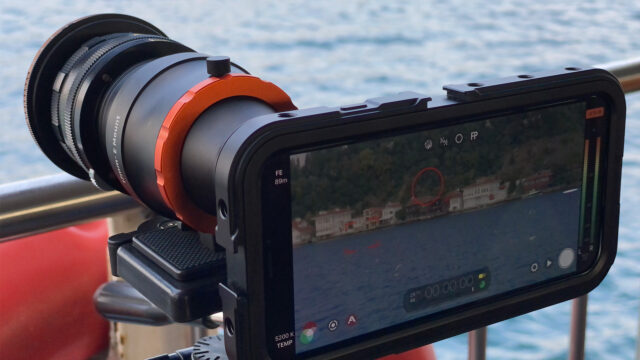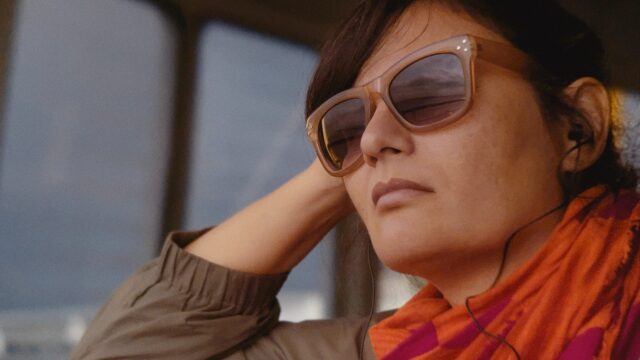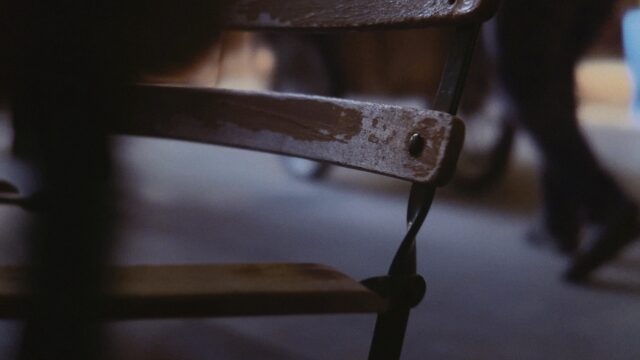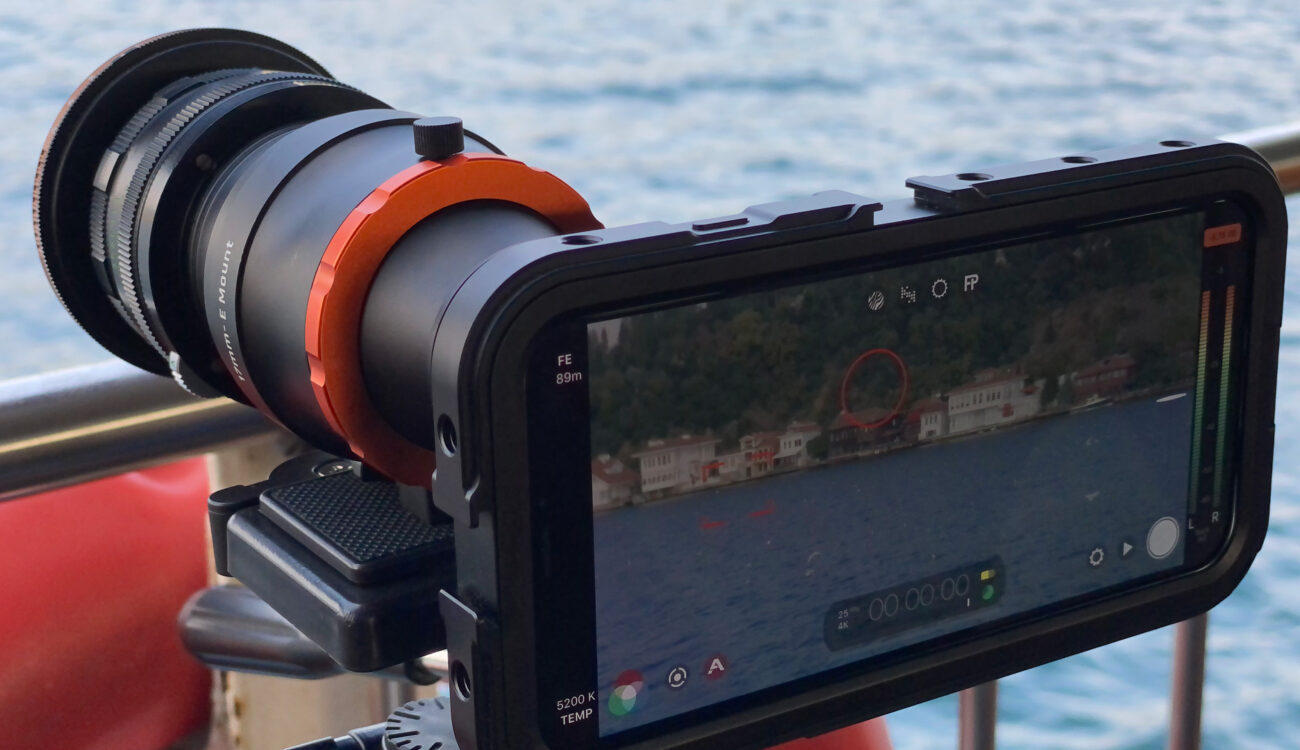
In the search for the “film look” when shooting video with a smartphone, we came across the new Ulanzi DOF Adapter. Portrait mode effects have improved a lot, but if you want to get closer to the “real thing”, you might want to take a look at this adapter. Interested in knowing more? here is my first impression.
Ulanzi have been making various smartphone photography related accessories for some time. Until recently the Beastgrip DOF MK2 was pretty much the only depth of field adapter on the market for smartphones. The new Ulanzi DOF Adapter is the new kid on the block, for half the price.
I’ve been shooting with it for a week so far on a visit to Istanbul, and am still checking footage, editing and compiling my thoughts, so a full review will follow separately. I’ve also never used the Beastgrip, so I can’t directly compare them. I can however introduce the Ulanzi DOF Adapter and share my initial impressions.
The Ulanzi DOF Adapter
All DOF (depth of field) adapters work the same way. A full frame lens projects an image (which is upside down) onto a focusing screen, approximately full frame in size. On the other side of the focusing screen, the smartphone camera lens is focused onto this projected image.
It’s a simple optical adapter, the focusing screen sits between the full frame lens and the smartphone camera lens, as far as I can tell there is one small optical element on the smartphone side. The focusing screen is placed at precisely the right distance from both to ensure the smartphone camera can focus properly on the screen, and the correct flange focal distance is maintained for the lens mount. The quality of the resulting image you can capture is really dependent on the type and quality of focusing screen in the adapter, and the lens you’re using.
The adapter doesn’t accommodate lenses with any kind of electronics, so will only work with fully manual lenses. You need a mechanical aperture ring and mechanical focus ring.
The Ulanzi DOF Adapter is built with a 17mm thread for mounting to Ulanzi’s own all metal smartphone cage, and features a Sony E-Mount for lenses. At first this might seem like an odd choice for a lens mount, especially considering that it requires fully manual lenses. However, the Sony E-Mount makes sense because it’s so easily adapted to almost any other lens mount. It has a short flange focal distance, so can be adapted to Canon EF easily, as well as vintage lens mounts, and even cinema PL. There are plenty of fully manual lenses that will work, both new and old.
Ulanzi DOF Adapter First Impressions
My setup for testing comprised of the Ulanzi Aluminium Smartphone Cage for the iPhone XS Max (the version for 11 Pro Max wasn’t shipping yet), the Ulanzi DOF Adapter, a M42 to Sony E mount adapter, and my Helios 44-2 lens.
I will save my detailed thoughts and feedback for the upcoming review, but here are my first impressions.
Practicality
The Ulanzi DOF Adapter is quite compact for what it is, but that doesn’t make it small. By the time you add a lens adapter and lens, the whole package can easily outweigh the phone, especially if you’re using large prime or zoom lenses. The whole rig takes up more space than shooting with just a phone, and will likely need to be mounted using the mounting foot on the DOF adapter itself for better balance and to reduce stress on the DOF adapter’s mounting point to the phone case.
It does mean more stuff to carry around, which negates one of the biggest advantages of shooting with a smartphone in the first place.
Image Quality
I’m not going to sugar coat anything, there is a hit in overall image quality and effective resolution when using the adapter, so having that real shallow depth of field comes at a cost. This isn’t to say the trade off isn’t worth it. For some shoots, I will definitely continue to use the adapter and knowingly sacrifice some image quality because the look, while technically imperfect can be really nice.
The main points to be aware of are a limit in resolution determined by the focusing screen itself, and some aberration towards the edges of the frame. However, as you can see in the frame grab above, if you frame a subject in such a way that anything towards the edges of the frame are out of focus anyway, you can hide most if not all of the aberration. So with clever framing and composition, it is totally possible to avoid the most glaring problems, and your audience will probably never know.
As for resolution, I’ve tested the Ulanzi DOF Adapter at both 1080p and 4K, and there’s no perceivable resolution benefit that I can see to recording 4K. The 4K image looks identical in sharpness and definition of detail to the 1080p image, only four times larger. I expect that 1080p upscaled to 4K looks identical to what was recorded in 4K because the limiting factor is the fine texture of the focusing screen. It is after all, working by diffusing the light focused on it.
I will say the look isn’t bad. It has a slightly soft, organic, textured feeling that is quite pleasing when combined with selective focus and bokeh. The result can be quite pretty, but imperfect, and not identical to what you’d get exposing a full frame sensor directly.
Light
There is a loss of light using the adapter, so this isn’t a low light, or night time option. During the day outside in any light from overcast to full sun will be just fine, in fact you may want to use ND’s if you want a slow shutter speed.
The darkest conditions I could get acceptable results was during the late afternoon in the full shade of a small street contained by high walls and a full overhead screen of intertwined grape vines. Not much light was penetrating to the street from above, but just enough.
Stabilization
There is no stabilization when using the DOF Adapter. In my experience shooting from a tripod is an absolute must. Handheld is not an option. I haven’t yet tried to mount the whole rig on a gimbal so I’m not sure if that’s a workable solution.
Initial Conclusions
If you’re a film photographer, a fan of vintage lenses, and love the analog imperfections of a lomo camera, then I think you’ll enjoy using the Ulanzi DOF Adapter. I for one definitely fall into this category and will use it because I quite like what the adapter does to the image. The result has a ton of character, but is far from perfect.
If you’re looking for a clinically clean, high resolution, sharp, edge to edge perfect full frame image, this adapter will not give you what you’re looking for.
It is however a lot of fun, and for the price, I think it’s great. I enjoyed using it to shoot photos just as much as video (if not more), and will continue to have fun making images with it.
Stay tuned for a more in depth review with a video.
Are you a smartphone videographer or photographer? Have you used a DOF adapter already? Let us know what you think of the Ulanzi DOF Adapter in the comments.
